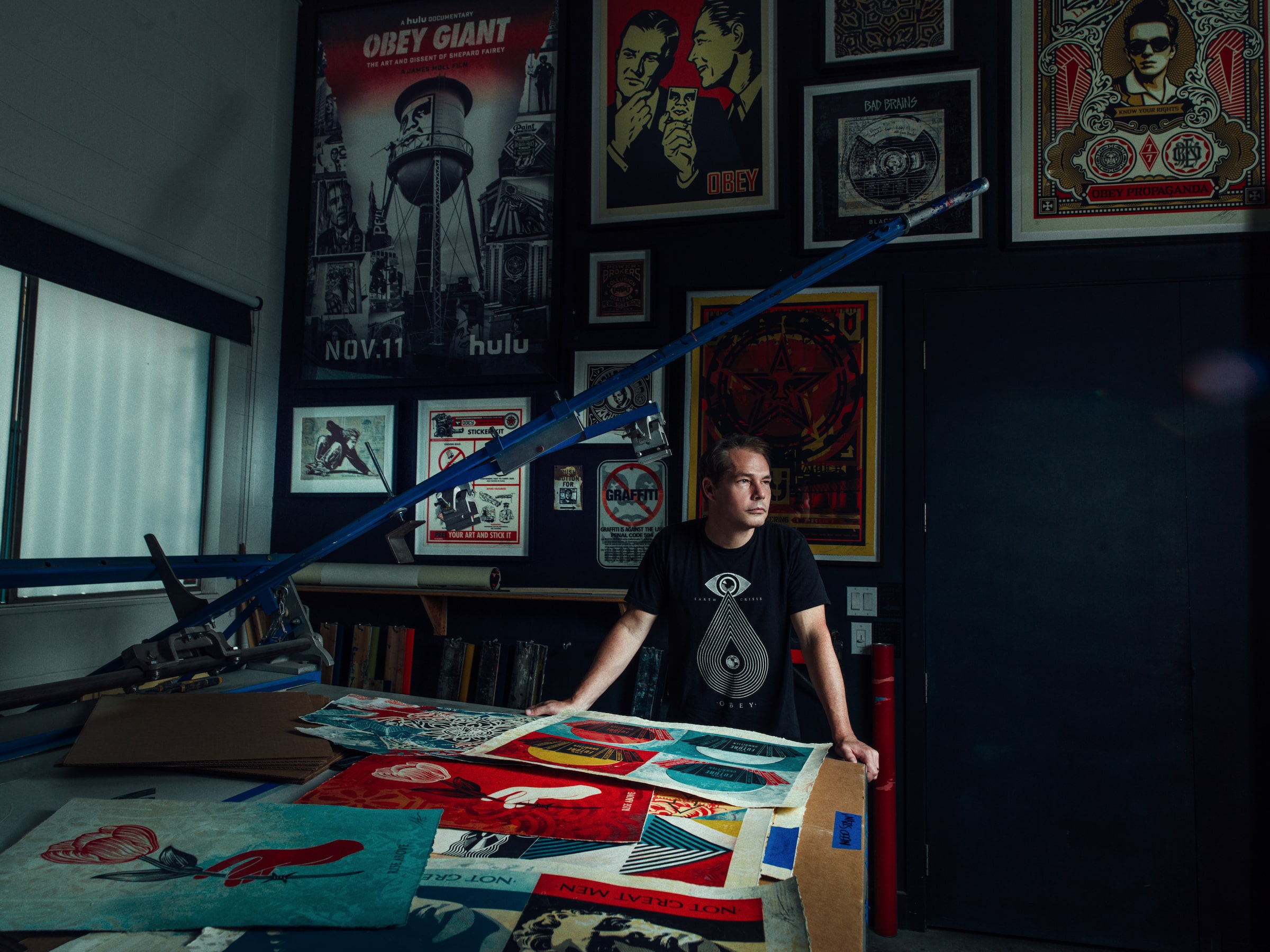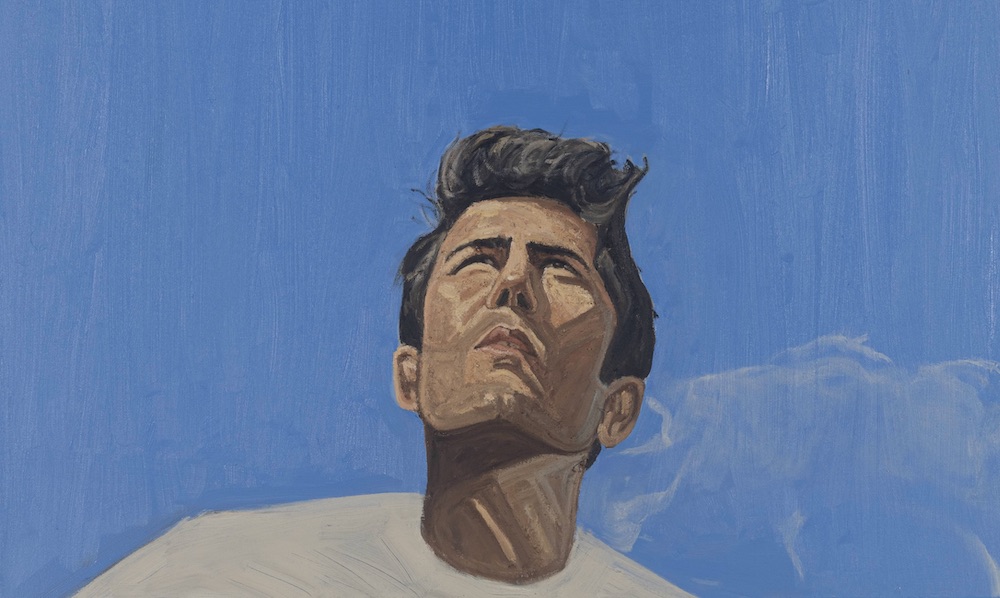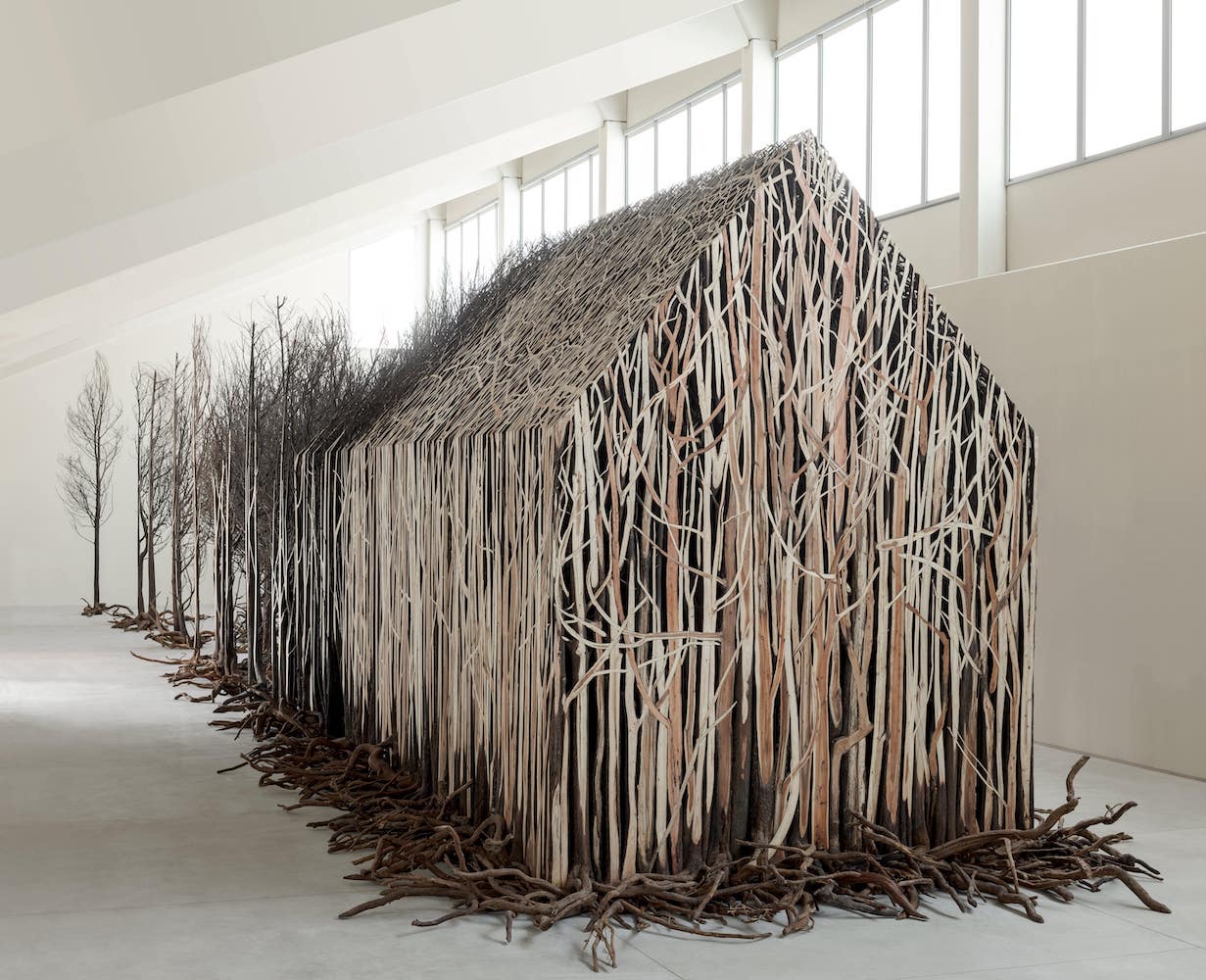In November, a major exhibition of work by William Kentridge opened at The Broad in Los Angeles. On view through April 9, 2023, it looks at 35 years of work by the South African artist known for his drawings, animations, installations, and theater pieces. Titled “In Praise of Shadows,” it includes more than 130 pieces that show the breadth of Kentridge’s output, and coincides with a premiere of his latest theater production, Houseboy, at REDCAT.
The location of Los Angeles offered a chance for the Johannesburg-based artist to focus on his film work and cinematic explorations. At the heart of Kentridge’s studio practice is an emphasis on drawing, often in charcoal, a medium that records the traces of thought, of the development of the idea. The space in between the marks, or in between the shadows of his animations and films, offers insight into his own understanding of his role within a politically and socially fraught space and history, and makes room for the viewer to fill in the blanks with their own memories and experiences.
Kentridge is interested in what happens in the margins of the studio, what happens in the unexpected moments in between. He posits that the “less good idea” may actually be the one we should pursue creatively, and in 2014 he founded The Centre for the Less Good Idea in Johannesburg to support local performers, actors, writers, and creatives in that pursuit. Whitewall asked the artist a series of questions around the exhibition at The Broad, his roundabout route to the theater, and his outlook on the future. On a “beautiful summer’s day,” as Kentridge told us, he dictated his answers to us, “sitting at the edge of the studio looking out over the garden . . . jacarandas in full purple bloom.” He finished up just as lunch was being set outside, where the whole studio would gather to share in the meal together, as they do each day.
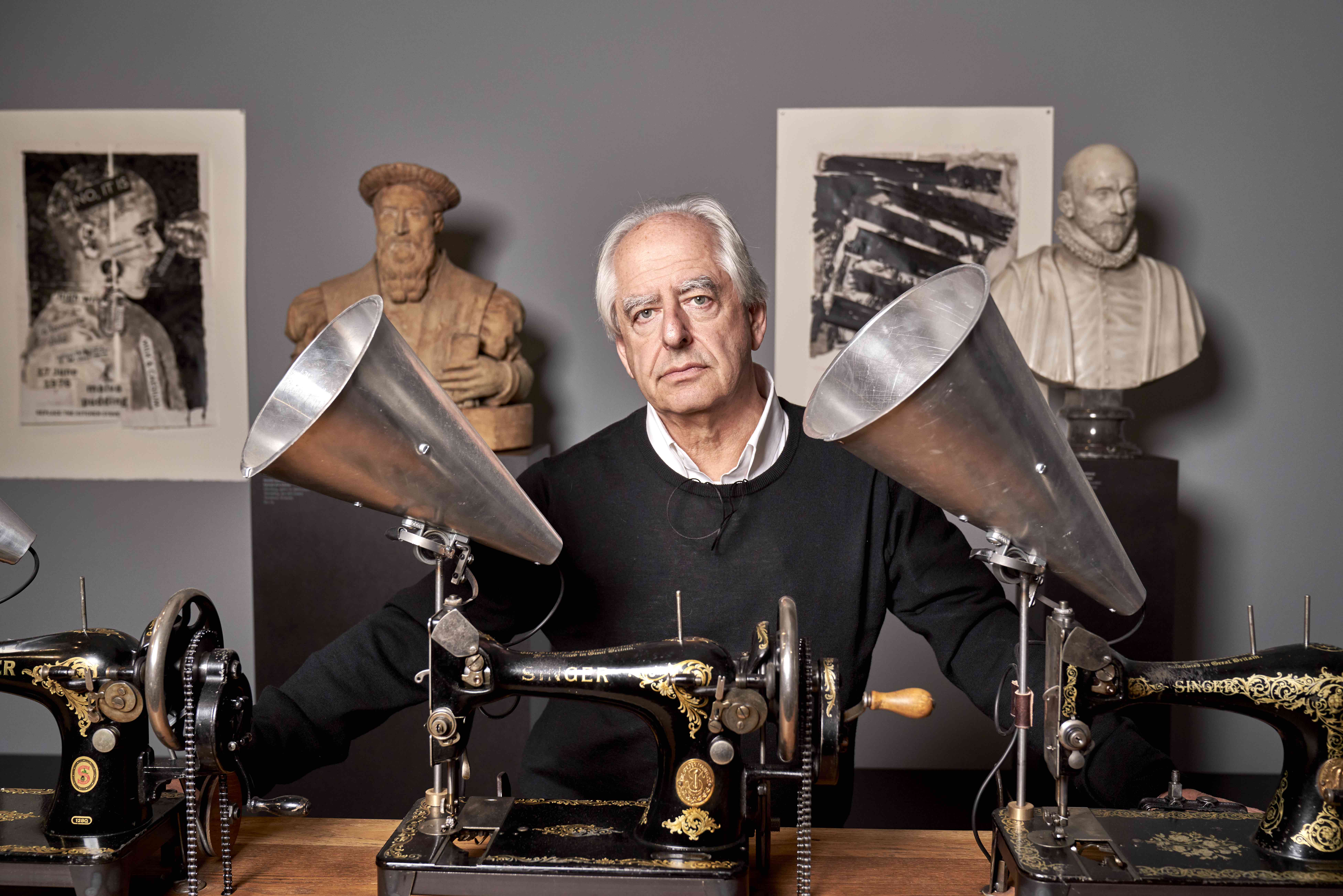
William Kentridge, photo by Norbert Miguletz.
WHITEWALL: What was the starting point of the exhibition at The Broad, “In Praise of Shadows”? Where do you begin when putting together a survey of 35 years of work?
WILLIAM KENTRIDGE: An exhibition is always a conversation between the work that an artist has made and the space in which it will be seen. And that’s not simply a receptacle for the work arriving, but also shapes how one decides which works to go there. Plus, of course, two extra considerations: one, that the exhibition takes place in Los Angeles, which would suggest highlighting the cinematic elements of the work or the connection to that, and, secondly, of course, or thirdly, or fourthly, the work in the collection the museum already owns of mine, which will be core of the exhibition, such as The Refusal of Time [2012].
WW: Can you tell us about the title, “In Praise of Shadows”? The first of your 2012 Norton Lecture series was also titled “In Praise of Shadows,” in which you discuss Plato’s prisoners in the cave, and how it is first easiest to look at shadows.
WK: Shadows, I suppose, are a key element of cinema—shadows being the obscuring of light—and all photography’s dependent, all sight, on that which is illuminated and that which is either not illuminated or has less light. In the Platonic idea, as we get more and more light, so you get more and more knowledge, but we do understand cinematically and photographically that as you get more and more light you can also lose information and have an overexposure. So having no light at all doesn’t work, and having pure light also doesn’t work.
That’s within the myth and the metaphor of the prisoners and the cave and Plato being led out of the cave into enlightenment. So it’s both a format or a technically specific response, but it’s also a philosophic response to Plato. And it’s also, of course, a political response to the nature of the Enlightenment, as in someone with all knowledge can bring this knowledge to other people living in the darkness. And our experience of colonialism has shown us the dark underbelly of all these projects of enlightenment. Not to say that the projects of enlightenment are false, but so far they have always come with this dark underbelly. In the same way that for Plato’s metaphor to work at all, it implies this army of unnamed people carrying the object to throw the shadows on the wall for the analogy and for the metaphor to take off and fly.
So all of these are ideas floating around in the project to do with shadows. It’s also, for me, something personal about a shadow being devoid of color as light is reduced so one sees more just tonalities and darkness and light rather than the brilliance of color. So as someone who works primarily in a monochromatic medium, this is also very good.
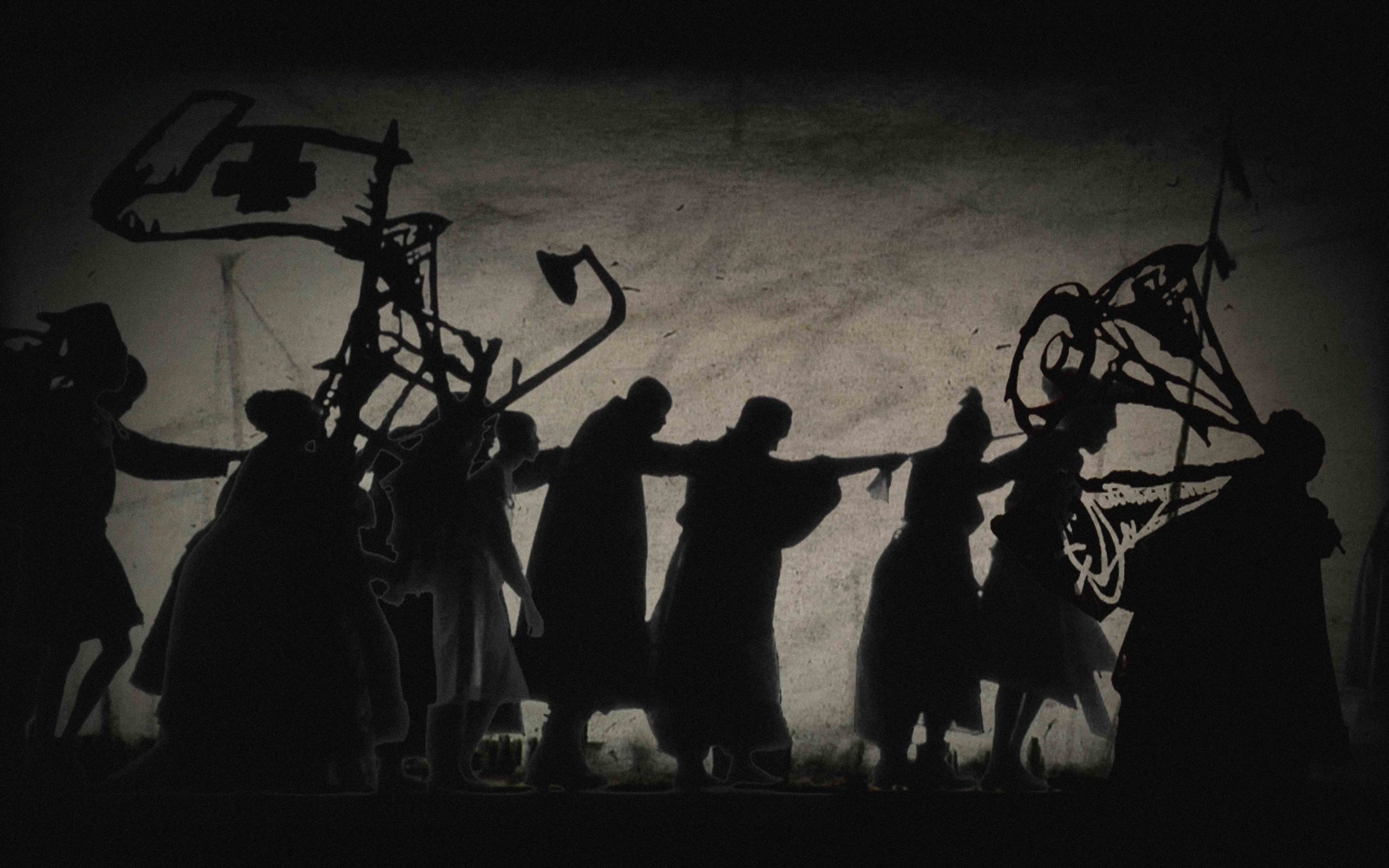
William Kentridge, “The Refusal of Time,” 2012, five-channel video installation, four steel megaphones, and breathing machine (“elephant”), dimensions variable, duration 30 minutes, The Broad Art Foundation, Los Angeles, directed by William Kentridge, music and soundscape by Philip Miller, video construction by Catherine Meyburgh, choreography by Dada Masilo, dramaturge by Peter Galison, breathing machine by Jonas Lundquist and Sabine Theunissen, sound design by Gavan Eckhart, movement direction by Luc de Wit, costume design by Greta Goiris, design by Sabine Theunissen, lighting design by Urs Schoenebaum, megaphones by Christoff Wolmarans, Louis Olivier, and Chris-Waldo de Wet, produced by Marian Goodman Gallery (New York and Paris), Lia Rumma Gallery (Naples and Milan), Goodman Gallery (Johannesburg and Cape Town), commissioned by Carolyn Christov-Bakargiev for dOCUMENTA (13), Kassel, 2012, executive production Tomorrowland, Caroline Naphegyi, Olivia Sautereau, courtesy of the artist.
WW: What role do you see the shadow playing in your work?
WK: What a shadow does is it makes you, the viewer, fully informed about the shadow. If I have a brightly lit apple, you can see its shape, its three-dimensionality, its change of colors, all of which tell you what that is. If you simply see a shadow, you see a slightly misshapen circle is that a not-quite-full moon, is it a planet, is it an orange, a table tennis ball? All of those things your brain will be throwing up as possibilities and answering in terms of the other clues around. And that I’m interested in because of the agency it demands from the viewer to be complicit in the making of the meaning of the object of the work.
So shadows demonstrate this very clearly. In all the work there’s always a mixture; in all the drawings and the film there’s a balance between what comes towards the viewer, either on the screen or in the drawing, and what they project onto it. What their associations are with the images or fragments of images that come towards them.
So, when you look at a drawing, you say, “Oh, I see a horse.” In fact, what you are doing is you’re looking at certain marks on the sheet of paper and filing them in with all your memories, and other images of horses that you see. And this is obviously how we go through the world every day, but it’s kind of invisible in daily life. It gets naturalized, out of sight, but in the studio it can be made very palpable and clear.
WW: For us as viewers, is it easier to see the shadow of a complex idea, a difficult reality, as shadow first?
WK: No, a shadow of an idea is harder. If somebody says, “This is an exhibition about man’s inhumanity to man” or “This is an exhibition about the deforestation of the Amazon,” then you have something to hold on to, and in a way it stops you from having the necessity to look at what it is you’re being shown, and told what it is you’re being shown. Whereas here, it’s more ambiguous; it runs the risk of being incoherent, of the fragments not adding up. It is something like a riddle that doesn’t have a definite answer, which one keeps going back to much longer than the riddle that has a clear answer.
WW: Given your experience in theater production, do you see a relationship between the scenography of an exhibition with that of a performance?
WK: For this exhibition, as for many many exhibitions, I worked with Sabine Theunissen, who is the scenic designer of the sets with me in the various theater and opera productions that I’ve made over the last twenty years. More recently, she started working with me on the designs of exhibitions. So there is a theatrical sensibility that does come into it in relation to color, and surface. And it’s always a balance between leading an audience through this theatrical space and saying, “No, let’s keep it as neutral as we can,” where people just separate out from the space and look at individual drawings. If the work is sacrificed for the theater, it doesn’t work. And it can be very soulless to have simply a white gallery with a succession of different drawings in it.
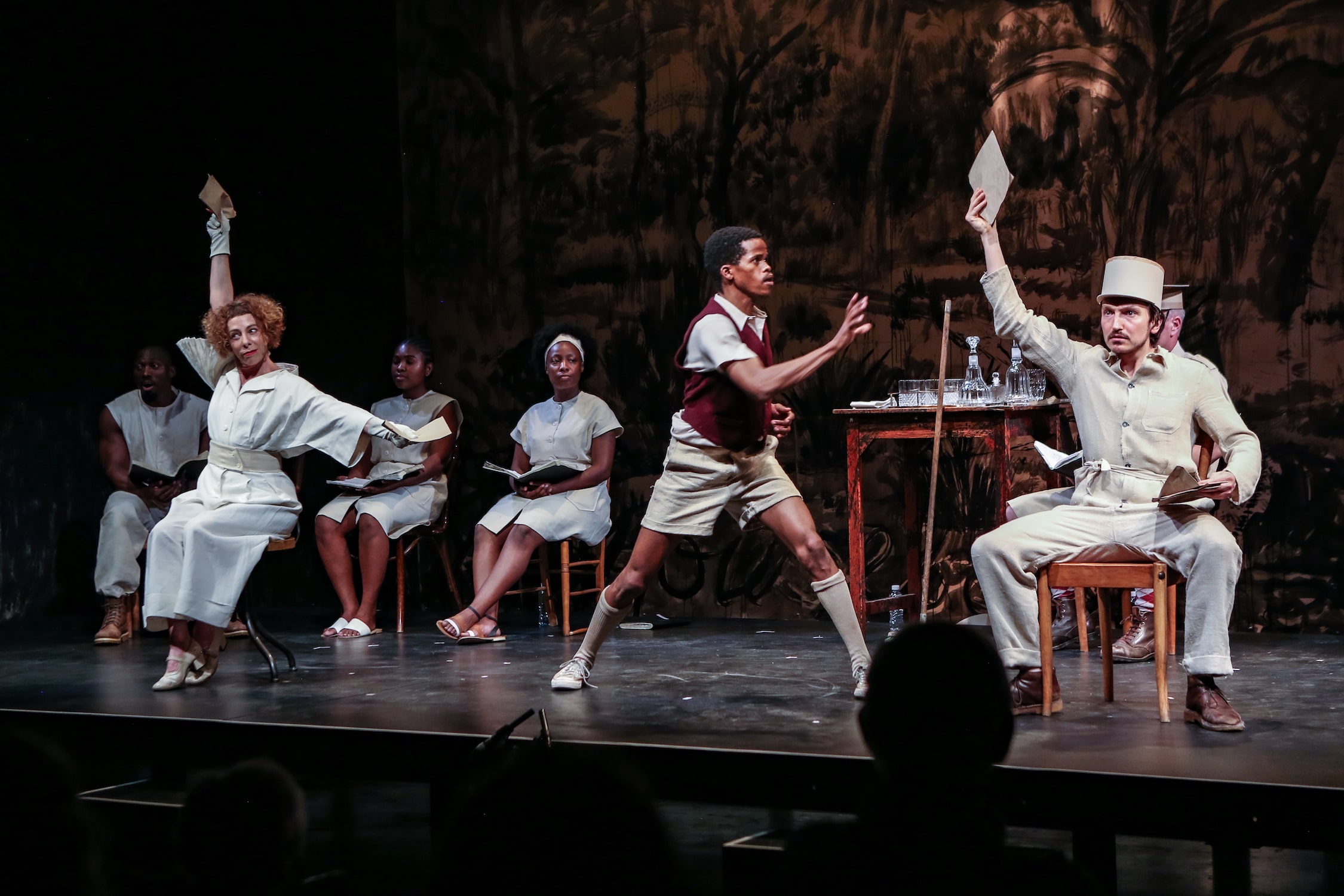
William Kentridge, “Houseboy,” 2021, photo by Zivanai Matangi, courtesy of The Centre for the Less Good Idea.
WW: Your 2012 video installation “The Refusal of Time” is a major aspect of the show. You look at the notion of time and its relativity explored in cinema prior to Einstein’s theory of relativity. What did you find of the ideas around time in the 18th century that you wanted to highlight in this work?
WK: My interest in science is not so much to make a scientific lecture. In the live performance version, I do several talks about different theories of time and how it developed. But it’s rather to take the metaphors that scientists throw out when working out their scientific ideas and seeing where those lead us.
So, for example, when they discovered that the speed of light was not infinite in the mid-19th century, it suggested that then if light took time to get from one place to another, then if you were at different places in the universe, the images you were seeing then would have taken a certain time to have reached you. So if you were five hundred light-years away, then you would see images from five hundred years ago. And if you were two thousand light-years away, then you may see events of the Roman Empire. And so, what that suggested was this universal archive of images up against the sky. This image provokes the idea of this endless stream of images coming out from the world out into space—a million projectors all projecting at the same time. So that’s an image and an idea that I want to work with.
WW: At the center of the installation is a breathing machine. Can you tell us about this kinetic sculpture and how it completes the work?
WK: One of the stages of codifying time, in making time more accurate, was sending time out from a central clock in Paris to various receiving stations around the city. And this time was sent by pulses of pneumatic air, through pipes under the city. The idea of this big, breathing clock that would pump out time was enough to set in motion the idea of the elephant, the machine in the center of the installation, which is pumping out our history and pumping out time. The science is always a way of finding a transformation from an idea into something visible.
WW: Some early works are on view at The Broad, like Art in a State of Grace (1988). What is it like for you to look back on these pieces? How do you see them today?
WK: It’s usually quite strange looking back at the really early pieces. For many, I think, my god, I had no idea I was doing that in 1985, and I’d still be doing that nearly forty years later. And these ideas I had about my position in a troubled world politically, socially, and aesthetically, that’s still very much the same place I occupy. Some of the early works, I look at them now, they feel like a kind of manifesto. And then there are other works which one’s very embarrassed to have done, to have one’s name on. And somewhere you think, god, I knew what I was doing then or I didn’t know what I was doing, and that was a wonderfully lucky situation to be in. I wish I could have that same lack of knowledge now.
WW: Your work celebrates the process of the studio. Was there a moment it clicked for you that what happens after the initial idea, what happens when you’re making what you set out to make, is what’s important?
WK: Working on animation over the years, I’m very much aware. There’s a lot of time for self-reflection as you walk between the camera and the drawings making the animations. But it was really seeing a series of films by Bruce Nauman of himself in the studio, and thinking back of the films that they took of Picasso painting, further back to the great paintings like Courbet and The Painter’s Studio—for the studio itself to become subject in the work. That led to a whole series and an ongoing interest in the studio and what one can learn from it as both a place of making and a place of making meaning.
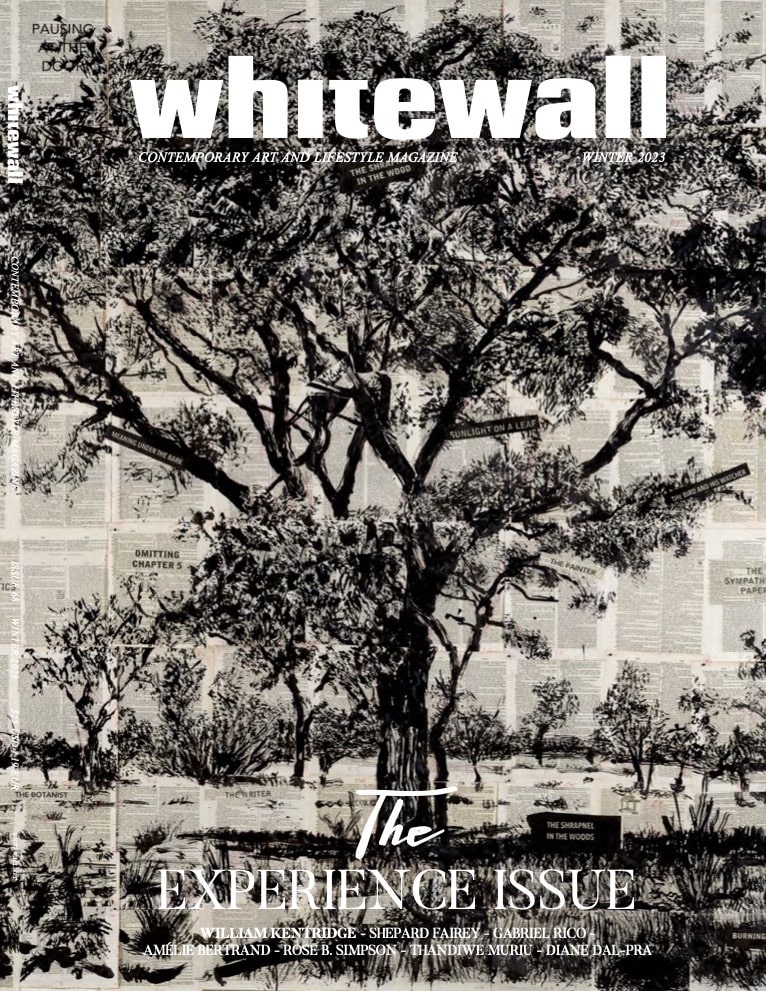
William Kentridge, “The Shrapnel in the Wood,” 2015, India ink on found pages, 210 x 220 cm, courtesy of Joseph and Meg Koerner and William Kentridge Studio.
WW: How does drawing, and specifically with charcoal, allow you to get there in the studio as well?
WK: The great thing about charcoal is its flexibility—that you can make a mark, hit it with a cloth, and it will more or less disappear, but it leaves a trace of the thinking behind it. It’s about the paper and the charcoal doing something that is not pristine. It shows the mess of thinking. This is about giving the image the benefit of the doubt. You start the image and see what it adds up to afterward. And if it’s not adding up, alter that one, destroy that one, change it. Not to say that it automatically finds its place at the end, but it allows the unconscious knowledge of the image to begin. Much the way you would with psychoanalysis allow free association as a starting point in the expectation that this will show other things that have either been suppressed or repressed or forgotten about.
WW: You have described your earliest animations as an attempt to make something that wouldn’t be shown in a solo show of drawings. Something done only for your own pleasure. Why was that crucial for you? What then did you think when your animations started to be shown in a gallery setting?
WK: I was very conservative when I started. I made drawings, and that was my art. And then at a certain point I started making animated films for myself. For me, one was art and the other was film. And I’d show the film sometimes at animation festivals.
When a curator came to me and said he’d like to show the films in an exhibition, I was shocked—even insulted. I thought, “That’s not art, that’s a film, it’s a joke to show a film in an exhibition.” But in the end, I was persuaded by the curator to try it, against my better judgment, and I was astonished when people didn’t just laugh but were really interested in the film.
Then I said, “Oh yes, of course, you’re right, this is where it should be seen.” Ever since then, this has been the primary space in which they’ve been seen. They are sometimes in festivals, but they are primarily seen as a different kind of drawing, which is why I refer to them as drawings for projects, rather than animated films. They are drawings using the processes of drawings, no scripts or storyboards—allowing an openness in the narrative and the meaning to be filled in by the audience watching them.
WW: Did the expansion of your practice into performance, art, and theater start in much the same way? As a way to work purely for your pleasure?
WK: I’d done work in the theater as a student and then I’d been advised you must choose what you want to do—either work and make drawings or do theater, but don’t try to do both. Which seemed very good advice, so I sold my etching press, I studied theater in Paris, discovered I was not an actor, worked in the film industry in South Africa for a while, and came back reluctantly to making drawings again. Then, finally, those drawings became films, animations, and those films were used in theater, and then I kind of gave up. I understood it had been a very long painful eight-year journey of the good advice of only doing one thing to understanding my only hope was to be working across multiple mediums.
WW: You’ve since said that the idea of being an artist is that all the mediums are open to you with which to explore your relationship to the world. What mediums have you enjoyed exploring recently in your continued exploration of your relationship to the world?
WK: There are certain techniques and processes that have been going on for many years. The series of charcoal animated films started in 1989, so that’s 33 years on. I think there are 12 or 13 of them. I keep coming back to them; it’s like back-to-basics. And then there’s a range of different kinds of animation, filmmaking, and drawing that I’ve done with different materials and techniques. And in the last two years a lot of sculpture, which usually starts as a hand-sized piece of wax and cardboard, but goes through various stages to make much larger pieces. So that’s been a pleasurable new development. And then the performance pieces, which have the pleasure of collaboration with many actors, musicians, performers, such as the one we do at REDCAT Theater coinciding with the exhibition at The Broad.
We founded a small art center in Johannesburg called The Centre for the Less Good Idea, and the piece at The Broad comes from the Centre work I did with people there. And there are many hundreds of actors, performers, directors, video people who’ve done projects through the Centre.
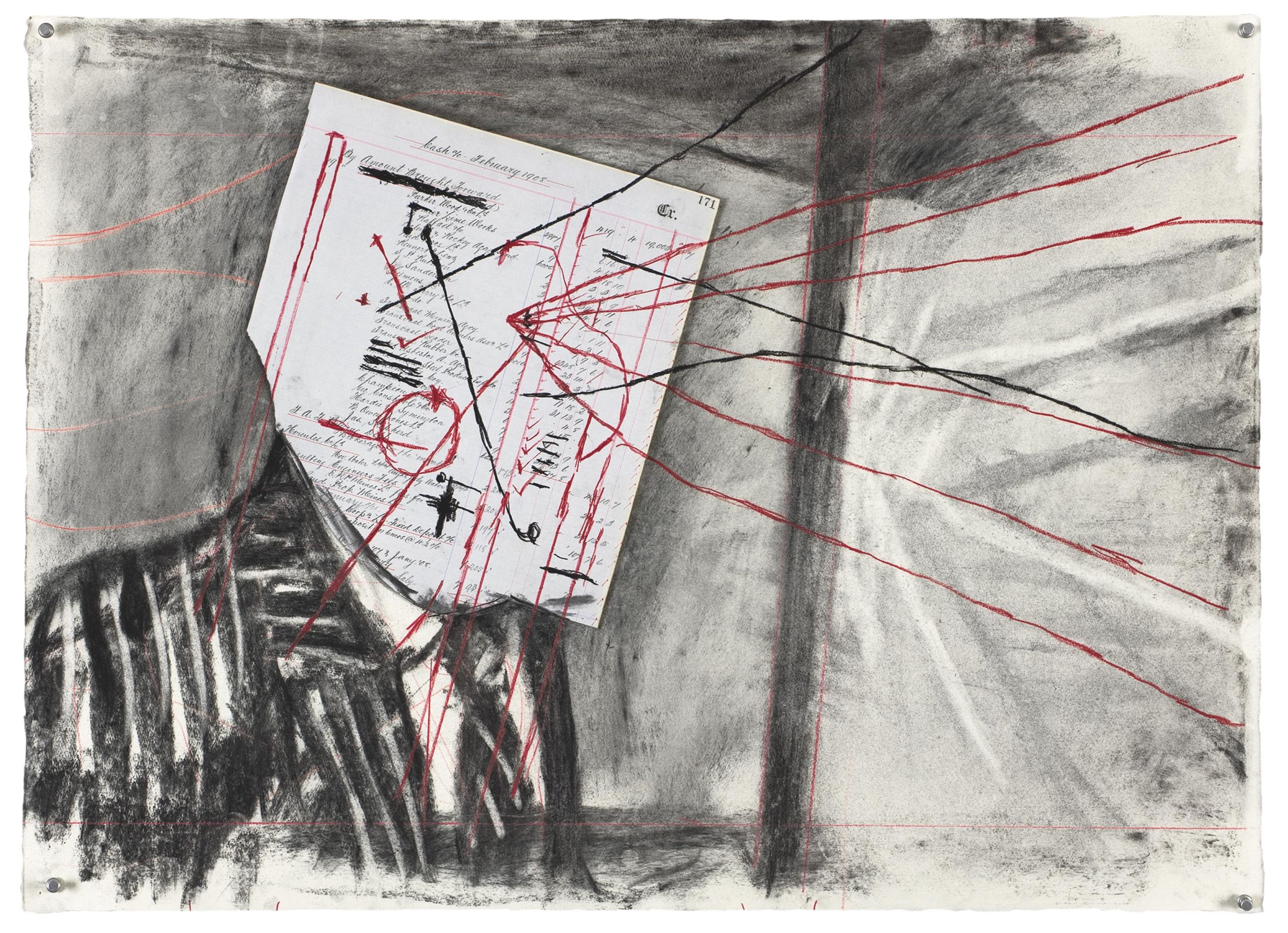
William Kentridge, drawing for the film “Other Faces,” 2011, charcoal and colored pencil on paper, 221.2 x 31 inches; courtesy of the artist and The Broad Art Foundation, Los Angeles.
WW: What is the mission of the Centre? What kind of environment for artmaking and creativity do you want to maintain there?
WK: Its name comes from a proverb: “If the good doctor can’t cure you, find the less good doctor.” If the grand idea you have starts to crack apart, you need things from the margins, from the periphery, from things that were improvised, particular solutions for local problems rather than huge ideas. And this is a practical way of thinking about working in theater or drawing or filmmaking. But it also has a politics to it, too—to showing the dangers of the authoritarians of certainty. Physically, some rooms downtown in town in which artists and performers and musicians are invited to come together to show their work, to work together to develop new projects.
WW: From the Centre is the production of Houseboy, which will be performed at REDCAT this November in Los Angeles. Can you tell us about the origins of this piece?
WK: There are two seasons a year, and the piece at REDCAT theater, Houseboy, was a piece that I developed with some actors for the seventh season of the Centre, which was the season based on texts. Most of the work we do is short-form. But we thought we would try one longer form. It’s not a reading of a complete novel; it’s a reading of just over half of the novel, a wonderful novel written in the late 1950s by Cameroonian diplomat Ferdinand Oyono. It’s a great evocation of some of the contradictions of the colonial world.
WW: What were some of the “less good ideas” for you as a director that were essential to Houseboy coming together?
WK: The idea was that you would turn the whole thing into a piece of theater, but one of the less good ideas was understating a lot of the beauty in the wit of the narrator in between the spoken dialogue. So to keep all of that part was one of the early decisions. To not have the actors talk to each other but to the audience, even if they are in conversation, was another less good idea that shifts how one sees, and not what one expects from a performance.
WW: You’ve said that the artist understands that both optimistic and pessimistic futures unroll together. At the moment, what is your vision of the future?
WK: I would have to say I’m slightly more than cautiously pessimistic. While understanding that there’s an optimistic future and pessimistic both unrolling at the same time, it’s just the one seems to be unrolling much faster than the other.
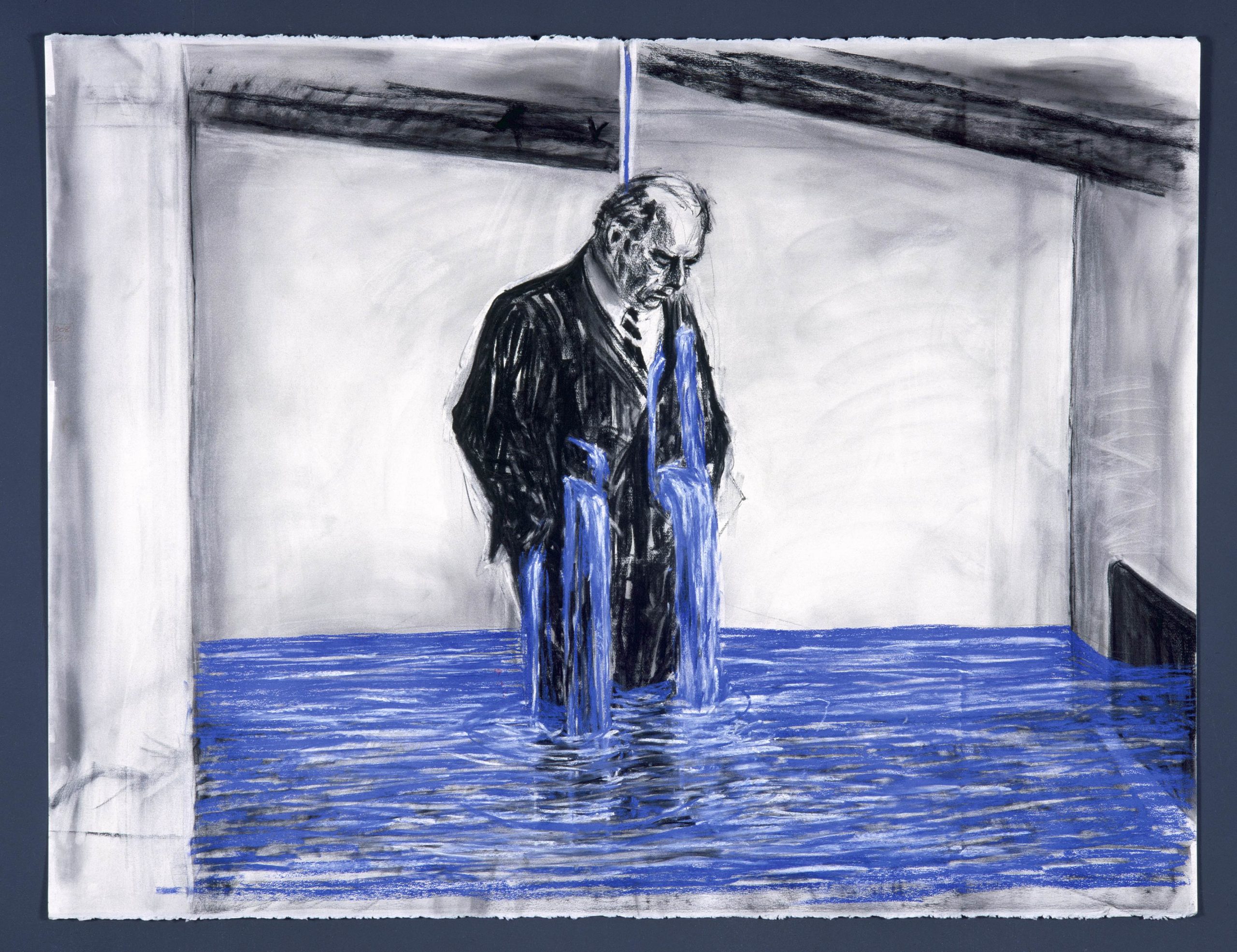
William Kentridge, “Stereoscope,” 1999, 35mm animated film, transferred to video and DVD, photo courtesy of the artist, The Broad Art Foundation, Los Angeles © William Kentridge.




